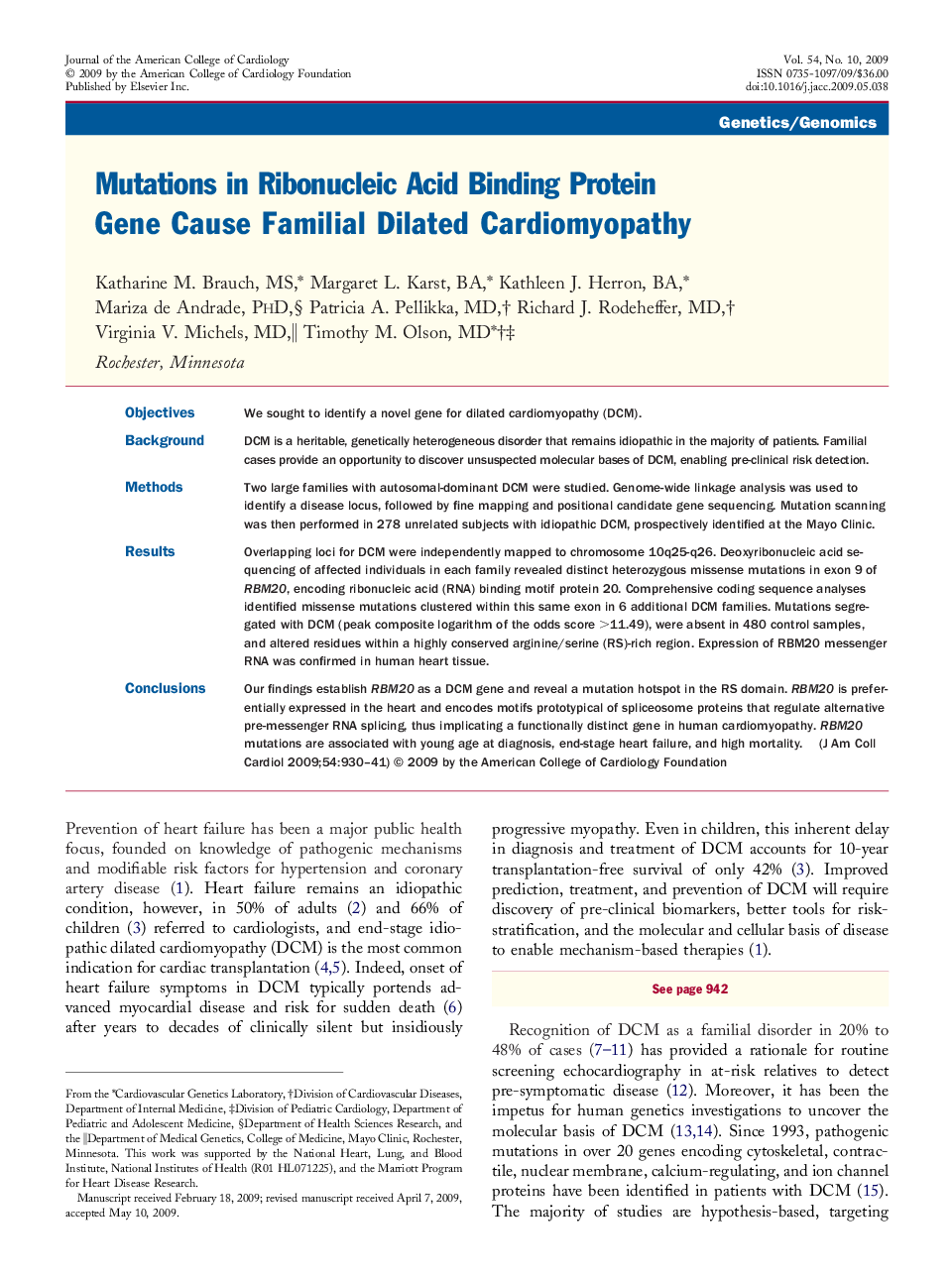| Article ID | Journal | Published Year | Pages | File Type |
|---|---|---|---|---|
| 2950578 | Journal of the American College of Cardiology | 2009 | 12 Pages |
ObjectivesWe sought to identify a novel gene for dilated cardiomyopathy (DCM).BackgroundDCM is a heritable, genetically heterogeneous disorder that remains idiopathic in the majority of patients. Familial cases provide an opportunity to discover unsuspected molecular bases of DCM, enabling pre-clinical risk detection.MethodsTwo large families with autosomal-dominant DCM were studied. Genome-wide linkage analysis was used to identify a disease locus, followed by fine mapping and positional candidate gene sequencing. Mutation scanning was then performed in 278 unrelated subjects with idiopathic DCM, prospectively identified at the Mayo Clinic.ResultsOverlapping loci for DCM were independently mapped to chromosome 10q25-q26. Deoxyribonucleic acid sequencing of affected individuals in each family revealed distinct heterozygous missense mutations in exon 9 of RBM20, encoding ribonucleic acid (RNA) binding motif protein 20. Comprehensive coding sequence analyses identified missense mutations clustered within this same exon in 6 additional DCM families. Mutations segregated with DCM (peak composite logarithm of the odds score >11.49), were absent in 480 control samples, and altered residues within a highly conserved arginine/serine (RS)-rich region. Expression of RBM20 messenger RNA was confirmed in human heart tissue.ConclusionsOur findings establish RBM20as a DCM gene and reveal a mutation hotspot in the RS domain. RBM20is preferentially expressed in the heart and encodes motifs prototypical of spliceosome proteins that regulate alternative pre-messenger RNA splicing, thus implicating a functionally distinct gene in human cardiomyopathy. RBM20mutations are associated with young age at diagnosis, end-stage heart failure, and high mortality.
